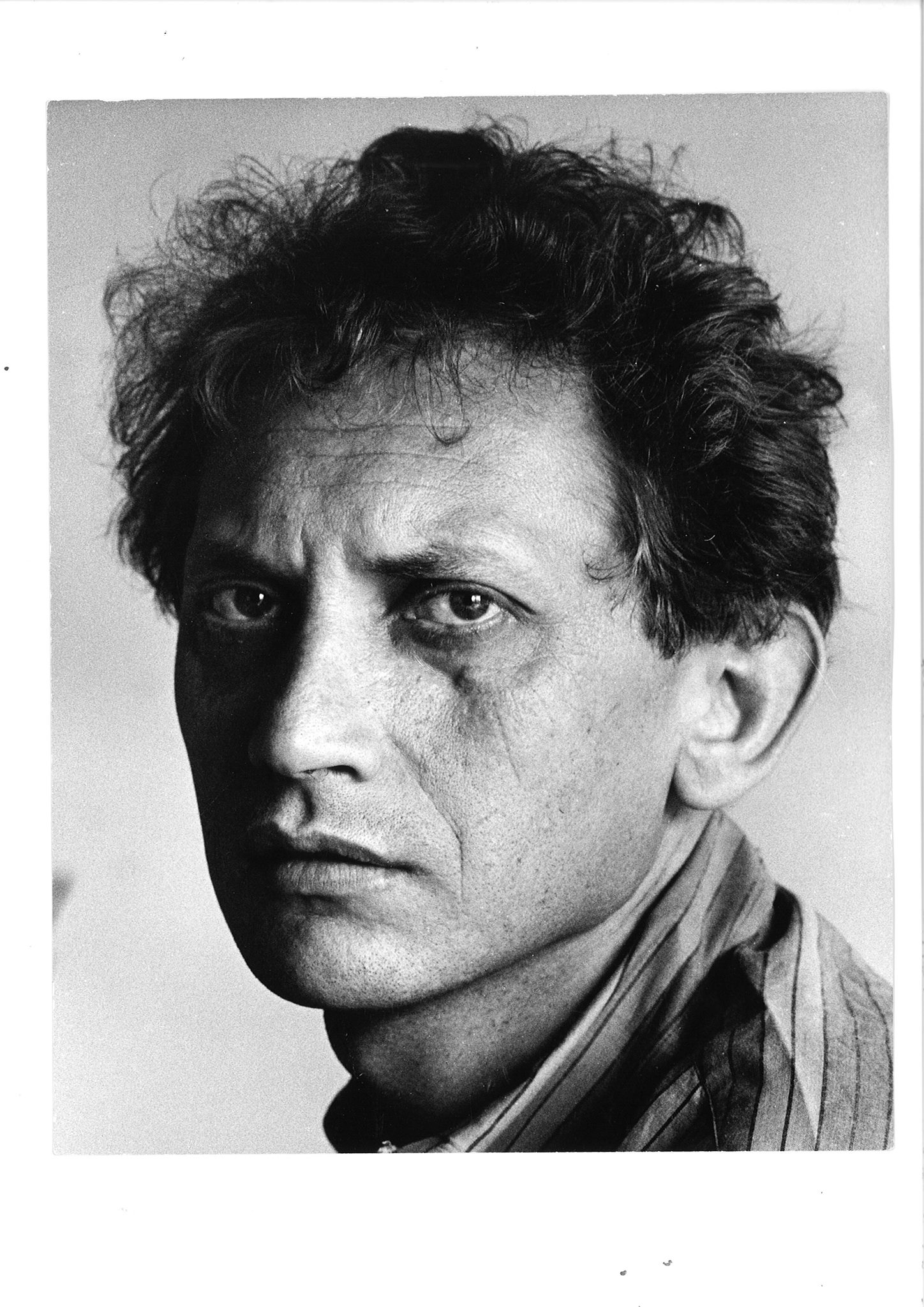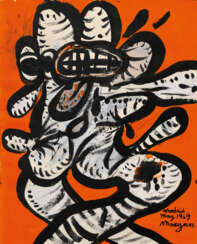maryan

Pinchas Burstein, better known as Maryan S. Maryan, was a Polish-born Jewish post-expressionist painter.
Maryan created colourful, atmospheric paintings that combined elements of abstraction and figuration. His works were richly coloured and used unusual materials such as glass and metal. He was known for his experiments with shapes and colours as well as his unusual technical approach to painting. Maryan S. Maryan was one of the founders of the Post-Expressionist movement and made an important contribution to the development of modern art.


Pinchas Burstein, better known as Maryan S. Maryan, was a Polish-born Jewish post-expressionist painter.
Maryan created colourful, atmospheric paintings that combined elements of abstraction and figuration. His works were richly coloured and used unusual materials such as glass and metal. He was known for his experiments with shapes and colours as well as his unusual technical approach to painting. Maryan S. Maryan was one of the founders of the Post-Expressionist movement and made an important contribution to the development of modern art.


Pinchas Burstein, better known as Maryan S. Maryan, was a Polish-born Jewish post-expressionist painter.
Maryan created colourful, atmospheric paintings that combined elements of abstraction and figuration. His works were richly coloured and used unusual materials such as glass and metal. He was known for his experiments with shapes and colours as well as his unusual technical approach to painting. Maryan S. Maryan was one of the founders of the Post-Expressionist movement and made an important contribution to the development of modern art.


Pinchas Burstein, better known as Maryan S. Maryan, was a Polish-born Jewish post-expressionist painter.
Maryan created colourful, atmospheric paintings that combined elements of abstraction and figuration. His works were richly coloured and used unusual materials such as glass and metal. He was known for his experiments with shapes and colours as well as his unusual technical approach to painting. Maryan S. Maryan was one of the founders of the Post-Expressionist movement and made an important contribution to the development of modern art.



Pinchas Burstein, better known as Maryan S. Maryan, was a Polish-born Jewish post-expressionist painter.
Maryan created colourful, atmospheric paintings that combined elements of abstraction and figuration. His works were richly coloured and used unusual materials such as glass and metal. He was known for his experiments with shapes and colours as well as his unusual technical approach to painting. Maryan S. Maryan was one of the founders of the Post-Expressionist movement and made an important contribution to the development of modern art.


Joos van Cleve, also known by his real name Joos van der Beke, was a prominent Netherlandish painter, active mainly in Antwerp from about 1511 until his death in 1540 or 1541. His work predominantly centered around religious subjects and portraits, including notable commissions for the French King Francis I during his time at the French court. His artistic oeuvre reflects a blend of traditional Netherlandish painting techniques with contemporary Renaissance styles, showcasing his direct knowledge of local art combined with an awareness of Italian developments.
Van Cleve's work was characterized by its elaborate detail, particularly in his altarpieces which often incorporated portraits and landscapes, demonstrating his refined painting style. His success in Antwerp was significant, and he was also recognized at the French court, indicating his high regard as a portrait artist. Notably, Van Cleve had the opportunity to paint members of the royal court, including King Francis I and Queen Eleanor of Austria, underscoring his skills in portraiture.
His paintings are recognized for their sensitivity to color and a unique solidity of figures, with some works showcasing the popular style of Antwerp Mannerism. Van Cleve was an innovator in introducing broad world landscapes in the backgrounds of his paintings, a technique that became popular in sixteenth-century northern Renaissance paintings. Despite his contributions to the Renaissance art movement, Van Cleve also produced works that were highly eclectic, drawing on the styles of earlier Netherlandish masters as well as Italian influences, particularly in his use of sfumato, evident in his Virgin and Child compositions.
For art collectors and experts, Joos van Cleve's legacy offers a rich exploration into the transition from medieval to Renaissance art in Northern Europe. His body of work, found in prestigious collections such as the National Gallery in Prague, the Louvre, and the Royal Museums of Fine Arts of Belgium, remains a testament to his versatility and skill as a painter of both religious narratives and royal portraits.
To delve deeper into the fascinating world of Joos van Cleve and to stay informed about exhibitions or sales featuring his work, consider signing up for updates from art institutions and auction houses. This subscription will ensure you remain at the forefront of developments and opportunities related to this influential artist's oeuvre, enhancing your collection and understanding of Renaissance art.


Kees van Dongen was a Dutch-French painter renowned for his vivid and expressive works that placed him at the forefront of the Fauvist movement. Born in 1877 in Delfshaven, Netherlands, van Dongen's journey into the art world began with his education at the Akademie voor Beeldende Kunsten in Rotterdam. His move to Paris in 1897 marked a pivotal moment in his career, immersing him in the bustling avant-garde scene and connecting him with influential circles, including Pablo Picasso and the Fauves. Van Dongen's art, characterized by its striking use of color and bold brushwork, captured the essence of his subjects with a unique blend of realism and abstraction.
Van Dongen's work evolved significantly over time, initially influenced by the dark tones of his Dutch heritage and the works of Rembrandt. His encounter with Fauvism around 1906 brought a dramatic shift towards brighter, more vibrant colors, marking his most iconic phase. His ability to capture the sensuousness and personality of his subjects made him a sought-after portraitist among the French bourgeoisie and celebrities of his time. Notable works include "Femme aux bas noirs" (Woman with Black Stockings), "Les lutteuses" (Lutteuses du Tabarin), and "The Dancer Anita," showcasing his fascination with the human figure, particularly sensuous depictions of women.
Beyond his remarkable contributions to Fauvism, van Dongen's ventures into illustration and his role as a society portraitist underscore his diverse talents and adaptability to the changing tastes of the art market. His works are celebrated in major collections worldwide, including the Hermitage Museum and the National Gallery of Denmark, affirming his lasting impact on the art world.
Collectors and art experts continue to appreciate van Dongen's work for its bold experimentation with color, form, and the evocative portrayal of his subjects. His legacy lives on as a testament to the vibrancy and dynamism of early 20th-century modern art.
For those keen to explore van Dongen's captivating works further and stay informed about new discoveries, exhibitions, and auction events related to his art, signing up for updates is a must. This ensures direct access to the latest sales and scholarly insights into the painter's rich oeuvre, a valuable resource for collectors and enthusiasts alike.

























